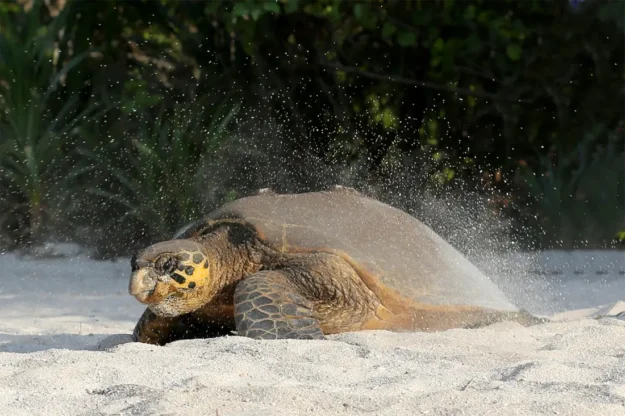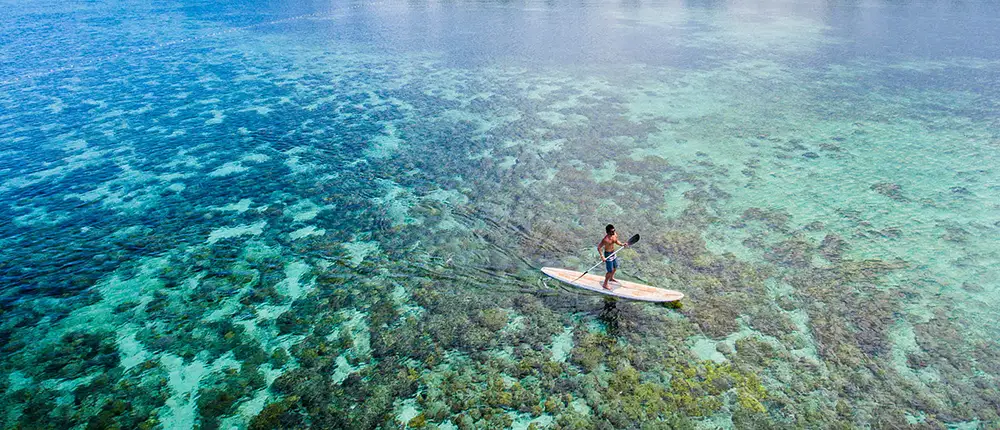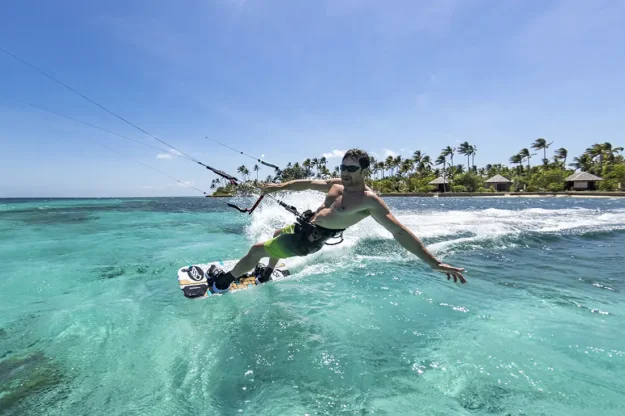Surface Intervals
“Even as non-divers, there are plenty of activities to choose from. This place is so amazing that just admiring the nature and ocean was one of the many great things to do.” ~ Francesca Furlani amd Marc Zeitouni
Wakatobi Resort has earned a reputation as one of the world’s premier diving and snorkeling destinations. Travelers come from around the world to explore the thriving coral reefs found within the marine preserve surrounding our oceanfront retreat. But even the most avid underwater enthusiasts must surface at some point. When they do, they can enjoy a wide range of additional activities, along with a level of scenic beauty, personal service, and amenities that create a premier vacation experience, even for those who rarely dip their heads below the surface.
It’s For the Birds
It’s not surprising that some avid fish watchers are equally intrigued by bird life. In recent years, the Wakatobi region has gained growing recognition in bird-watching circles. There are more than 170 known species of birds found on the islands, and several new endemic species have been identified in the past few years. These discoveries include the Wakatobi monarch, the Grey-sided flowerpecker, the Wakatobi white-eye, the Wangi-Wangi white-eye, and the Wakatobi sunbird.

In 2022, researchers identified a new species known as the Wakatobi Sunbird or the Wakatobi nectar bird. These diminutive creatures resemble American hummingbirds (though they’re not closely related), and males display bright iridescent plumage that shimmers in the sunlight. Photo by Wakatobi Resort
Birding at Wakatobi is an ideal after-dive activity, as there’s no need to go far from the resort to start racking up species counts. From the resort, the Onemobaa Nature Trail leads into a world of pristine greenery. Here, paths crisscross the island’s interior and lead to a local village on the northern shore. Walkers can make their way to secluded shores, or to interior thickets that provide habitat for a variety of birds and butterflies. Also native to the island are monitor lizards, which can often be seen around the grounds behind the resort and act as habitat for these intriguing animals. More about bird watching at Wakatobi >here.

For a more in-depth look at local craftsmanship, take a tour to studios where villagers hand-weave traditional sarongs and other textiles. Photo by Wakatobi Resort
Daytime Diversions
After enjoying our underwater landscapes, guests can take part in a variety of land tours that visit several of the resort’s surrounding islands. There are guided scooter tours to explore the island of Tomia, with stops at local villages and a ride to the hilltops to take in panoramic views of the surrounding islands and ocean. The resort team can also organize trips to a traditional village market where guests can take in the hustle and bustle of local commerce as traditional street vendors sell fresh produce and handicrafts. For a more in-depth look at local craftsmanship, there are tours to see local boat builders at work and visit studios where village women hand-weave traditional sarongs. These tours can also include historic and natural points of interest such as a 16th-century fort and bamboo groves that are home to large colonies of fruit bats.
Different Strokes
Wakatobi’s dive and water sports center provides a complimentary fleet of kayaks and stand-up paddle boards that can be used to explore the clear shallows of the House Reef. Guests who want to venture a bit farther can explore the island’s shoreline north or south of the jetty or visit a lagoon that provides habitat for resident bird populations, invertebrates, and colorful fish life. Paddlers can glide over calm waters in a self-guided kayak tour or arrange to be accompanied by an experienced guide who knows the sights and sounds of these saltwater forests.
An increasingly popular activity is a guided kayak excursion to the small, uninhabited island of Lintea, which lies about one mile to the west of the resort. After a speedboat ride to the island, guests transfer to kayaks for a leisurely paddle through the mangroves and a chance to view a rich variety of bird life. After the paddle, the tour continues with a visit to traditional stilt houses that are used as temporary housing for the Tomian people when they are tending to their agar-agar seaweed farms.
Come Fly a Kite
Days with moderate breezes are ideal for learning the sport of kite surfing, and Wakatobi now has a dedicated kiting center with equipment and instruction provided by resort staff. Beginners can master the basics right off the kite beach, where are instructors and chase boats are standing by.
More experienced kiters can move to the eastern lagoon for speed runs inside the reef, or head into the channel to play in the chop. For additional fast action on the water, the staff can fire up one of the resort’s fast launches to tow wakeboarders.
Nocturnal Nature
Wakatobi’s commitment to preserving the wildlife and the natural beauty of the region extends to the land as well as the protected reefs that surround the property. Green and sustainable operating principles are among the resort’s key values, and the property is maintained in an undisturbed state that provides guests with numerous opportunities to enjoy nature.
At night, the resort maintains soft lighting along the beach. This not only allows for inspiring views of the star-lit sky, it also encourages nesting turtles to come ashore.

This Hawksbill turtle was spotted heading back to the ocean after laying eggs on Wakatobi’s beach. Photo by Wakatobi Resort
Wakatobi’s beaches are a favorite nesting site for several species of sea turtles, which come ashore each year to bury their eggs in the soft sands. Resort staff marks and monitors each nest to ensure its safety. When the hatchlings emerge, a few lucky guests may be on hand to watch the youngsters make the short crawl to the water. As the turtles grow, they can often be seen feeding on the grass beds and shallow reefs around the resort.



